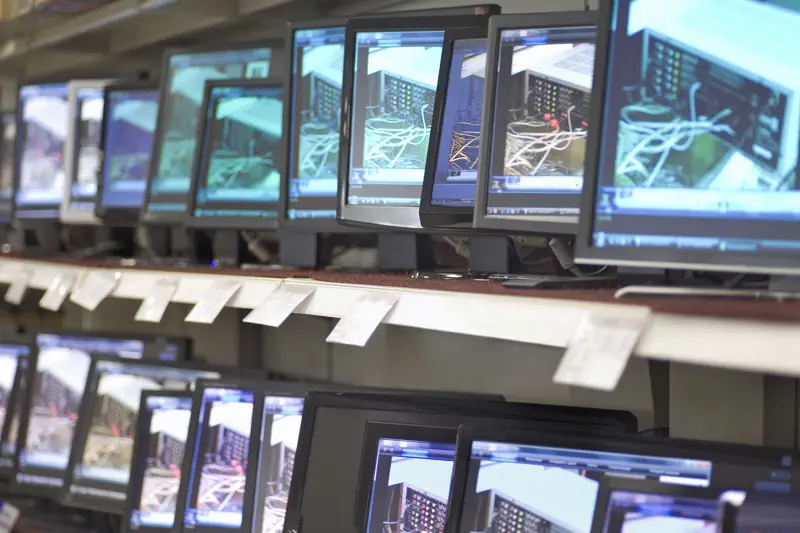Choosing a monitor for your business may seem easy, but there are several key factors that need to be taken into account. I am talking about screen size, resolution, aspect ratio, and more. This article should help you make an informed decision in case that you are interested in purchasing a monitor for your business-related needs.
1. Screen size.
I’d say that screen size is one of the most important factors to consider when choosing a display for office work. Picking a monitor with a diagonal of at least 19 inches is highly recommended, and some experts suggest going for much larger screens, with diagonals of up to 32 inches.
The needed screen size will vary based upon the type of work that you will be doing. While a larger screen may be necessary for image-intensive tasks such as graphic design or video editing, a 19-inch display will often be enough for standard office tasks, such as writing articles.
2. Resolution.
Did you know that screen size and display resolution are interdependent? There is a limited number of pixels in each screen panel, which means that larger monitors can accommodate more pixels. And that’s the only way to do it properly, because huge monitors that have low resolutions will display bad-looking, pixelated images. It is obvious that products with smaller diagonals will display sharper looking texts.
Nowadays, a full HD (1920 x 1080 pixels) resolution is the minimum acceptable standard. For best results, pick a monitor with a diagonal of 27 inches (or less) that’s got a QHD resolution (2560 x 1440 pixels), or choose one that has a UHD resolution (3840 x 2160 pixels) if its diagonal exceeds 30 inches. The higher the resolution, the better, of course, regardless of screen size. Keep in mind that more pixels = more money, though.
3. Aspect ratio.
Many IT specialists agree that the perfect screen ratio for a monitor designed for office work is 16:9. However, if you are a graphics designer, for example, or you edit videos or compose music, an ultra-wide monitor with a 21:9 aspect ratio will provide more screen real estate, making your job easier.
4. Panel type.
This one is a no-brainer: choose a display with an IPS (In-plane Switching) panel, because it will show colors accurately and has wide viewing angles. It is true that these types of monitors have slightly bigger response times, but this will only be noticeable when you play fast games or watch action movies. If you plan to use the monitor for work-related tasks AND gaming purposes, a monitor with a VA (Vertical Alignment) panel may be more suitable. Just keep in mind that VA panels aren’t the ideal solution for office work.
5. Refresh rate.
This feature indicates how often the image is refreshed each second. A monitor that has got a higher refresh rate will not display flickering images, thus reducing eye strain.
My recommendation is to choose a monitor that’s got a refresh rate of at least 60 Hz. Most modern monitors exceed this value, so you shouldn’t have a hard time finding one that does the job. Don’t forget to look for other eye protection features such as blue light reduction, flicker-free panels, etc.
6. Connectivity options.
Choose a display that offers multiple connectivity options if you can afford it. Pick one that has two or three HDMI inputs, a DisplayPort input, a USB hub, internal speakers, etc. Some monitors, particularly those made by Gigabyte, also include KVM switches, which allow you to connect two or more computers (maybe your desktop and laptop?) to the same monitor.
7. Price.
Price is the last criteria on this list, but I know it is very important. However, since a good monitor will be a long-term investment in your business, it is essential to purchase the best screen you can afford. So, save money by purchasing a computer with a slower CPU, and make sure to get a great display that does the job and is easy on your eyes.
It's important to do your research and compare lots of monitors until you find the one that fits your needs and budget perfectly. Websites like Display Ninja and Rtings offer detailed reviews of hundreds of different monitors, allowing you to make an informed decision. Also, don’t forget to check people’s reviews and ratings on the most popular e-commerce sites.

